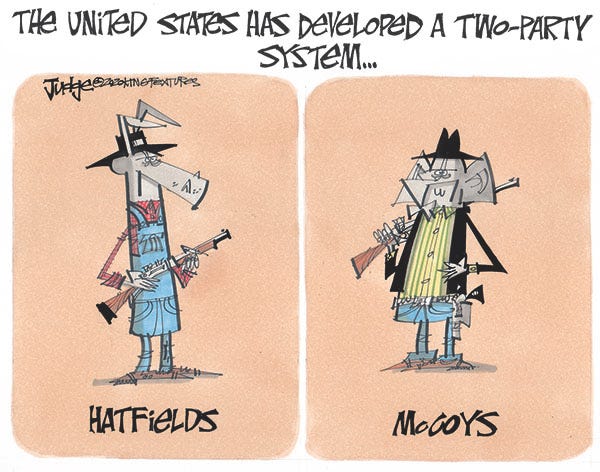
Let’s start with a couple stories.
Story # 1:
When novelist Elmore Leonard was given the chance to turn one of his books into a movie, he took it. But when he turned his screenplay in to whatever idiot was in charge, the idiot complained the Leonard hadn’t changed anything.
Leonard just took his book and added the stuff necessary for a screenplay; no new characters, dialogue or scenes.
At that point Leonard figured out why all his books got screwed up when they were made into movies: the person adapting the book felt like they had to make changes whether they were needed or not.
They needed to justify their paycheck.
Story # 2:
When I worked at the San Diego Union a columnist I worked with taught a college-level class in journalism.
At the end of the year he always gave the same final; he gave his students a column by WWII war correspondent Ernie Pyle and told them to edit it. If they changed a word, they flunked the test.
And every student flunked the test.
It was his way of telling them that “sometimes it’s right” and they didn’t always need to screw around with what they were given.
How I got around editors editing
If I showed an editor a single sketch for a cartoon idea, they had a tendency to mess with it:
“What if he was riding a horse?”
“Could you add every soldier in the American Army?”
“How about a snake that says, ‘Don’t tread on me’?”
At some point in my career I realized editors were going to edit whether the cartoon needed it or not, so being a boy genius I decided to give them something to edit.
Instead of showing my editors one idea, I’d show them three and if I could work in a sketch of the Pope doing something unnatural and outrageous I’d put that sketch on top because it would scare the shit out of the editor and make the cartoon I really wanted to do look tame by comparison.
Choosing a cartoon meant the editor got to make a decision and fulfill their natural inclination to edit. Worked like a charm for decades, but now my method of working has had some unintended consequences.
A cartoon needle in a cartoon haystack
Let’s do the math.
Five cartoons a week, which required 15 cartoon ideas, times 50 weeks a year (never took more than two weeks vacation because I didn’t want to prove they could live without me which unfortunately they figured out anyway) for 37 years.
That’s 27,750 cartoon ideas.
Only a third of those ideas got published so that’s about 18,500 cartoon ideas that I never used and it would be great if I could remember which ones they were.
I once lost track of my garage door opener for about a year and a half and I can go down to my basement and 30 seconds later forget why I’m there, so keeping track of 27,750 cartoons is hopeless.
People – and by people I mean some of the editors I worked for – would say why don’t you look up your published cartoons and find out if you ever used this idea and I’d try to explain that was impossible.
Nobody sane has the storage space to keep thousands of cartoon originals and if you tried to do it by looking at back issues of newspapers it would take hours to find it if it’s OK to draw a cartoon you need to start working on in the next 30 minutes.
People have no idea how this material stacks up year after year.
Evergreens
In the cartoon world an “evergreen” is a cartoon that can be done today, tomorrow or next year.
Being a certified moron (I might have exaggerated that part about being a boy genius) if I got a good evergreen cartoon I’d sometimes hold it back for a day when I didn’t have an idea.
The cartoon above is an example.
I’d write those evergreen ideas down and save them and sometimes save them too long and forget I had a good idea that had never been used. Recently, I was looking through some old material, found a note about the Hatfield-McCoy cartoon idea and decided to finally use it.
Just about the time I was finishing the cartoon it really started to seem familiar to me, but I couldn’t remember if I’d ever published it or just sketched it and forgot it.
So…
I didn’t send it to my syndicate, but figured I could post it here and whine about how hard it is to be a cartoonist, which right now seems like a nice break from writing about people dying and racism.
Some of you are longtime Kansas City Star readers, so if this cartoon looks familiar to you, let me know.
And let’s hope your memory is a little better than mine.
Stay safe, everyone.



Love that SD Union anecdote. Quoted you in a writing group.